March is National Nutrition Month and I have started to celebrate with my third graders!
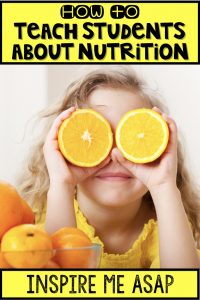
I am one of those people who really do enjoy working out (can’t run a marathon if you don’t!) and eating chia seeds with my plain Greek yogurt and wild organic blueberries mixed in. I don’t even give my pup dog food- nope! Home cooked soup every night for him and a healthy breakfast in the morning. Now, in the same breath, I must admit that I have a *slight* addiction to Coke and just may have given it up for Lent. Four weeks strong, but who’s counting?”
Since my students are allowed to bring “healthy” snack to eat in the classroom, I use it as a perfect opportunity to conduct our official Fat Test Experiment and Sugar Experiment, which jumpstart our nutrition unit. I like to set up these two activities up as a science inquiry, where students develop their own questions and ideas about what is happening, versus me just telling them, “Sugar is bad for you, don’t eat it!”
For one of our first experiments, students go into:
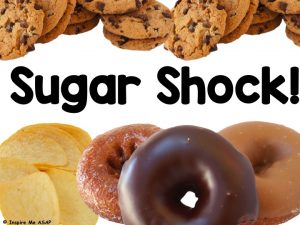
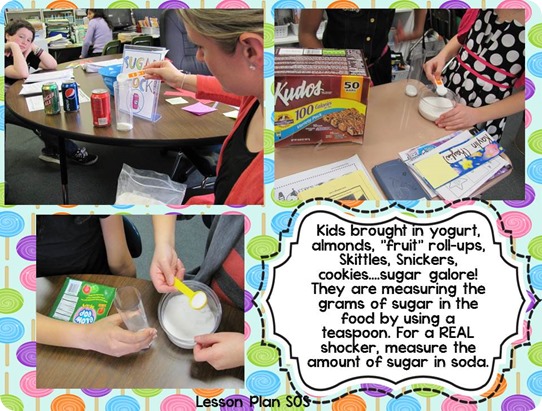

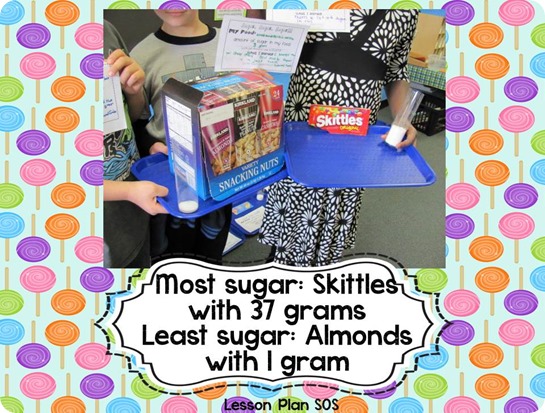
To go into further sugar shock, I tell my students to record their food/snacks/drinks in a food log for a day. Then, we measure out the amount of sugar that they eat in an entire DAY!!
The next activity is a completed as a whole class. One at a time, we read each sentence and students identified if it was True or False.
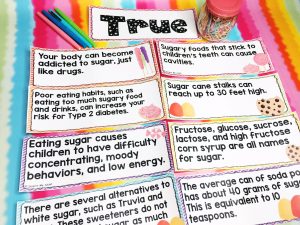
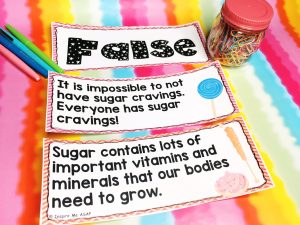
I knew they would have a hard time believing me for some of these statements. After all, they are shocking even for me! However, I had proof! Proof in the form of articles and books about sugar! With the implementation of CCSS, using textual evidence has become a staple in my classroom, during our ELA block.
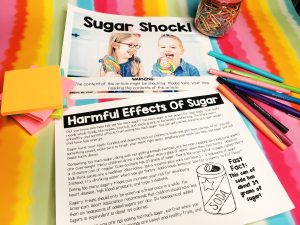
This article explained the harmful effects of too much sugar- in which students identified the main idea and supporting details. The students used what they learned for our next hands-on activity. Students sorted different photographs of (real) food, into two categories: high sugar foods and low sugar foods.

Many of the foods that were on the picture cards were part of the sugar experiment. The students used the nutrition labels to find the EXACT amount of sugar in the food, before classifying it as “high” or “low” sugar.
My students became Sugar Sleuths and sorted the true and false statements.
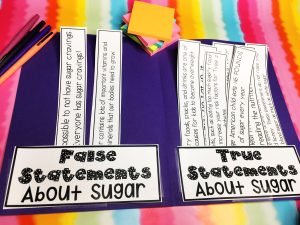

If you are looking to turn your students into nutritionists and create their own fat and sugar test (among many other lessons/activities), you may be interested in my nutrition file:

There are over 180 pages to this extensive file.
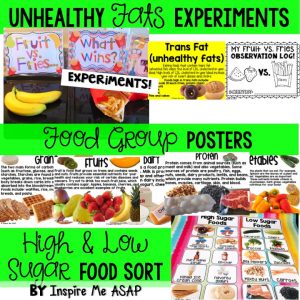
Activity 1: Fitness and food log-The students will keep track of all the food they eat and exercise they do for a week. They will then reflect and analyze their food and exercise intake for the week.
Activity 2: Healthy and unhealthy lunches part 1- This lesson will help your students open their eyes to the food that they put on their lunch tray if they have a school lunch or a lunch from home.
Activity 3: Healthy and unhealthy lunches part 2- Students will use photographs of real food to compare two different lunches and write about the similarities and differences with a Venn diagram.
Activity 4: Healthy breakfasts- Now that your students are hopefully making better choices for their lunches, they are ready to conquer their breakfast food! Working in cooperative groups, ask your students to dissect the breakfast displayed on Smart board/printed as a hard copy.
Activity 5: Mission Nutrition- Students will be challenged to participate in a mission nutrition challenge for 10 days.
Activity 6: Food pyramid lessons- Students learn about the different food groups with this interactive lesson. Students compare the old food pyramid to the current food pyramid, and identify the main differences between the two.
Activity 7: Analyzing nutrition labels- Student learn how to analyze the nutrition labels on their favorite foods. Lesson includes an example of a nutrition label and resources for your students to analyze their own nutrition label.
Activity 8: Food group posters- This resource incudes a poster for each food group (grains, fruits, veggies, dairy, protein) to print and display. There are two options for you. One set of posters have beautiful photographs of real food. The other set of food group posters includes clip art of food.
Activity 9: My nutrition flip book- As you teach about the different food groups, students can follow along by writing what they learn in their own personal nutrition flip book. There is one page for each food group.
Activity 10: Exercise every day- Remember when students took the nutrition mission challenge? Now, they will take an exercise every day challenge! Students learn that recommended amount of daily exercise is 60 minutes per day.
Activity 11: Eat the colors of the rainbow- Students learn what “eating a rainbow every day” means. In this lesson, students work together to cut out pictures of foods that represent different colors of the rainbow. Lesson includes a note to go home, a student flip book, and a bookmark printable.
Activity 12: Sugar Article- Students read the article independently, as a whole group, or with partners and fill out the “3,2,1” graphic organizer to reflect on what they learned.
Activity 13: True and False Interactive Sort- There are 16 cards that have a sentence about sugar. One at a time, a student reads the card and the class determines if the statement is a true or false by holding up their sign. Students have a discussion about the statement and place in under the correct category. After this part of the lesson is complete, students will independently read, cut, and sort the sentences into “true” and “false” statements. Resources include directions, 16 statements about sugar, one blank template to write your own, an answer key, and a “sugar shock” color poster to print if you choose to display for a bulletin board.
Activity 14: Sugar Sleuths- As a follow up to the whole group true and false interactive sort, students turn into sugar sleuths and independently (or with a partner) read, cut out, and sort all sentences into their own book.
Activity 15: High Sugar/Low Sugar Food Sort- There are 36 photographs of real food that students must identify as “high sugar” or “low sugar.” Students sort the foods into the correct category. This can be done as a whole group or as a center. Resources include a color informational poster about high sugar foods, 36 real photographs in color of common foods, and “high sugar/low sugar” cards to print.
Activity 18: Sugar Experiment- Students use real sugar to measure out the amount of sugar in their favorite snack. Students compare the amount of sugar in their food to the other snacks students tested.
If you would like to purchase the nutrition unit on Teacher Pay Teachers, click here: Nutrition Unit.
Save 10% by purchasing this file directly from my website. Click on the purchase button below:
Stay healthy, my friends!

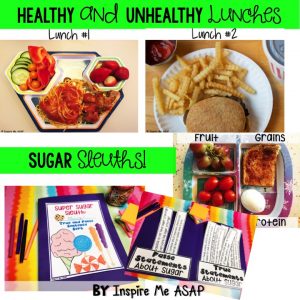
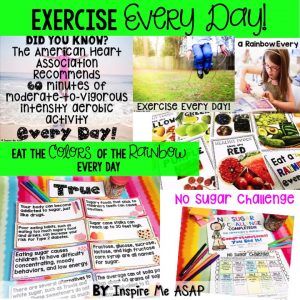




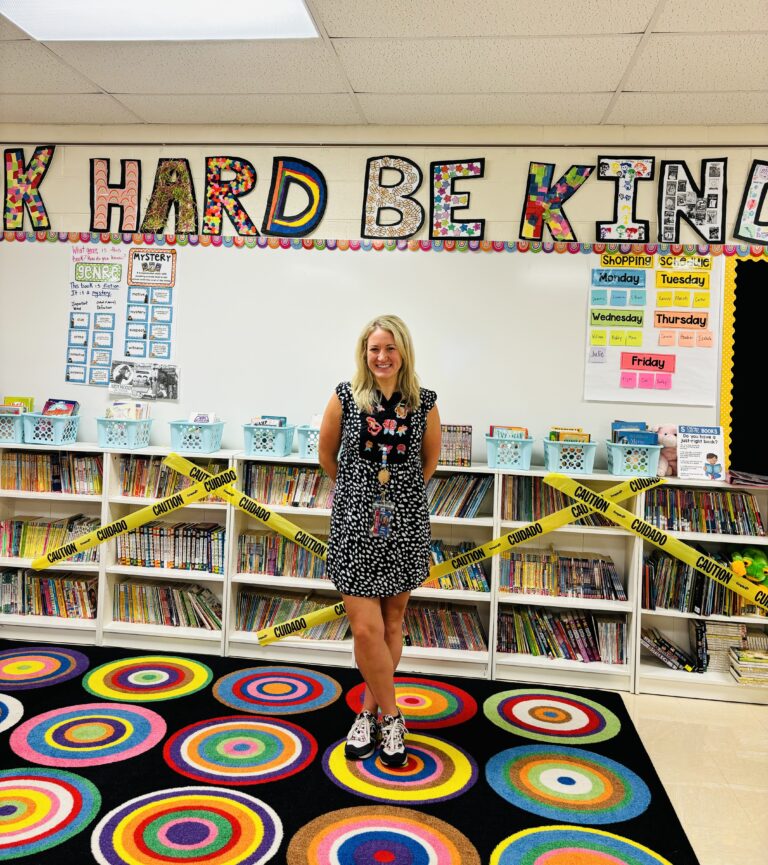



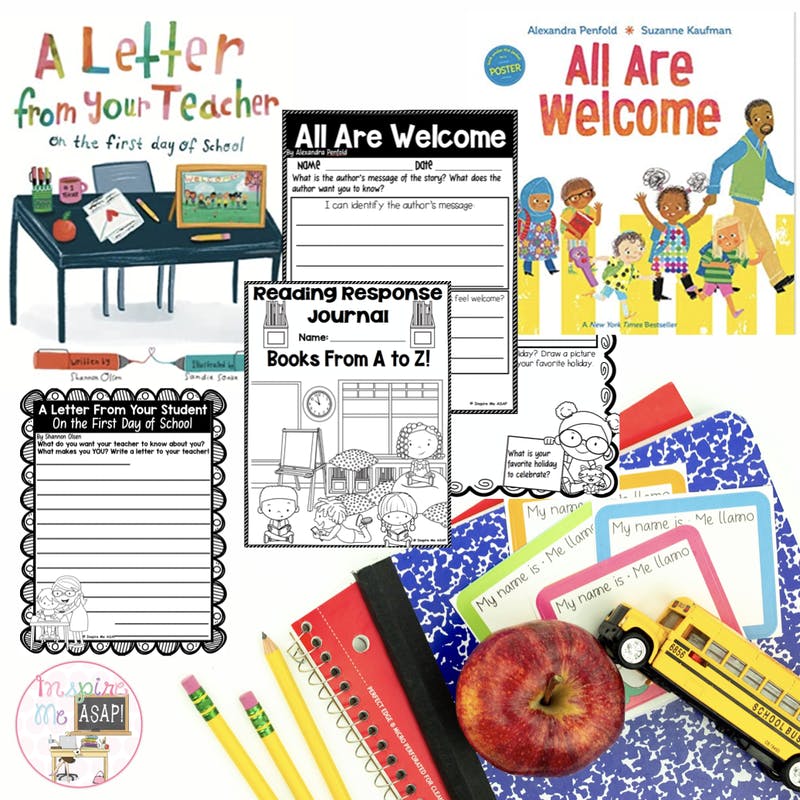
4 Responses
I love that unit! Hopefully your students start making better lunch choices now. I recently did a lesson with my student where we read Scholastic articles about the amount of sugar in chocolate milk and soda, and then the amount of fat in happy meals. They freaked out. It really is crazy isn't it? I also am a huge fan of PLAIN greek yogurt and blueberries. Just had some for lunch. :)
Amy
Eclectic Educating
What a great unit! I love that you are teaching them things that most adults don't know or realize. :) Several of my middle schoolers either have chocolate milk and cookies for lunch; others eat nothing. I try to talk nutrition with them, but most are uninterested. I have mentioned it to parents a few times and am always shocked when they don't see a connection between low grades/attention in the afternoon and a crummy lunch. *sigh*
~Amanda
I love this unit! I let my students bring a "healthy" snack, but many times that ends up being a Fruit Roll-up or Teddy Grahams. What is healthy about those? Our family reads every label before we buy something and I would love to pass on a few of those healthy tips to my students. Thanks for letting us know about this unit. Go chia seeds!
Third Grade Galore
I have to say, I'm not one of those super-healthy eaters myself… but I'm trying to be better! It's amazing the sugar and fat in foods kids eat a lot. I think my students would get really into these lessons. Thank you SO much for sharing your ideas!
Jenny
Luckeyfrog's Lilypad